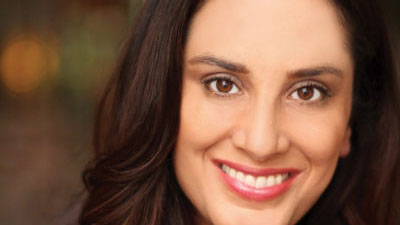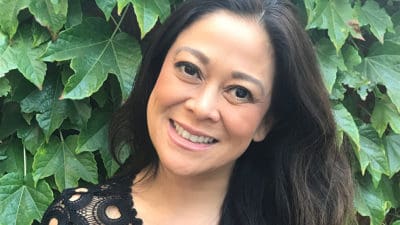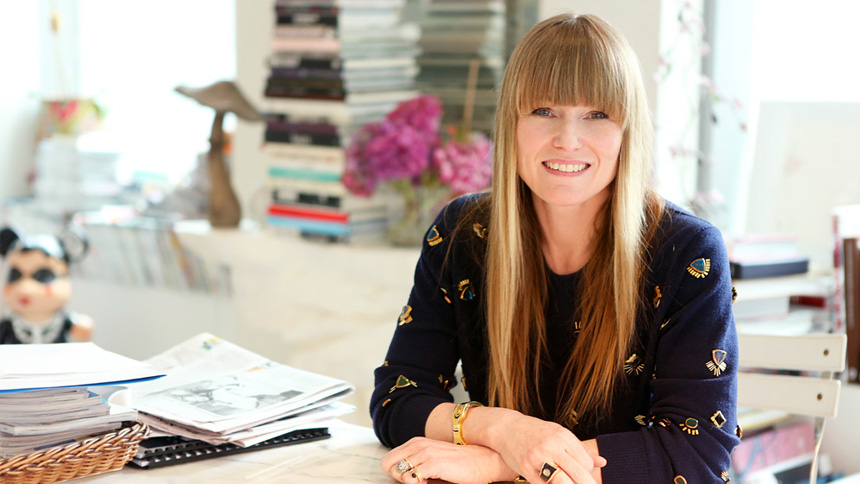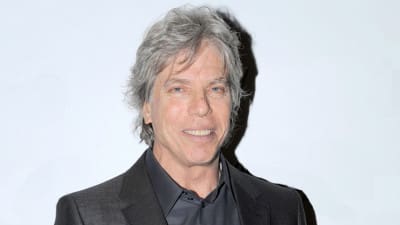From an early age, Canadian native Vinita Singla has had a knack for all things journalism.
That passion and drive has taken Singla from a small city in British Columbia to internships at Mediabistro, NY1 News, WPIX-TV, and CNN, with bylines at the New York Post, CNBC, NBC New York and Huffington Post.
Also on Mediabistro


Combining her passion for journalism and voice acting, Singla joins Mediabistro as a guest instructor of the Writing for Audio online training course, where she introduces techniques on how to effectively “write for the ear” and communicate succinctly in the booming world of podcasts, radio shows, podiobooks and audio blogs.
Vital Stats:
Name: Vinita Singla
Title: Freelance Multiplatform Journalist and Voice Actor
Years at current postion: I have been freelancing in journalism since 2007.
Hometown/where are you from?
I was born in Penticton, British Columbia, a small city—population approx 33,000—in Canada. I love visiting my hometown, especially because it’s a wonderful respite for me from life in Manhattan.
Where do you live and work? New York, NY
Education
College:
- Ryerson School of Journalism
- The University of British Columbia
- The City University of New York Graduate School of Journalism
- Queen’s University
Major: M.A.’s in Journalism and Political Studies
Social Info
Twitter: @vinitasingla
LinkedIn: Vinita Singla
What was your first real job? How did you get it?
My first real job was as a production assistant on American Morning at CNN-NY.
I was offered the position in 2008 after a few months of interning at CNN. I believe that I was offered the opportunity because senior staff recognized my story pitches, work ethic and enthusiasm.
Please describe what you do in your job in 1-3 sentences.
Since my time at CNN, I have produced news segments, worked as a health editor at NBCNewYork.com, reported news at the New York Post and hosted a live business news show from the Nasdaq for NDTV Profit, a cable news channel in India.
All my jobs involve me pitching story ideas, conducting interviews and creating compelling content—on deadline—while reporting news. That is what I do.
Is this where you always thought you’d end up? Or has your career been a wild ride of curveballs and left turns?
Wild ride…
I feel fortunate that I have been able to maintain a freelance career since I graduated from journalism school in 2008. My journey has been a bit of a wild ride in that one gig will often lead to another opportunity or to a connection who ends up having a significant impact on my career direction. I am grateful that I’ve had opportunities to work in New York print, digital and TV newsrooms with talented co-workers who strive to keep up with story developments.
What inspired you to break into this role?
Since I was very young, I’ve always been drawn to news, storytelling and writing.
When I was eight-years old, I’d instinctively highlight the who, what, where, when and why in a newspaper story. Writing structure fascinated me. I also loved watching CNN as a teenager and then an adult while studying politics in Canada. As I matured, I realized the impact that storytelling can have on others, which is one of the main reasons I pursued journalism.
What about your job gets you excited to jump out of bed every morning? What makes you want to hide under the sheets?
My favorite parts of working in news are interviewing people, finding a unique story and then seeing that story come alive. I also am driven by breaking news situations. During those times, there is a unique newsroom energy, which is a real treat for me to be a part of.
What makes me hide under the sheets?
Nothing, really. I’m a reporter because I love to explore places, see different cultures and hear new ideas.
How do you stay on top of trends in your field?
CUNY offers many journalism workshops to the public through a program called CUNY J+. CUNY J+ has helped me keep abreast industry trends.
I also find workshops, meet ups and conferences hosted by the South Asian Journalists Association (SAJA) to be very helpful.
What do you want to get better at/skills you want to develop and why?
I want to improve at being able to digest and retain more content on multiple platforms every day. At the same time, I want to take more digital breaks.
What’s the biggest misconception people have about this field/role?
In a newsroom, I often feel an adrenaline rush, especially while covering breaking news but at the end of the day, covering news is work and one needs to be prepared for long days, attention to detail and never-ending deadlines. Hosting, producing and covering news are not glamorous jobs.
What’s the one piece of advice you would give to someone looking to break into this field?
As you build your career, take one step at a time.
If you’re unable to land your dream job right away, know that another opportunity awaits you. For those breaking into the field today, remember that with so many media outlets, if you really want to work in news, you are bound to land a gig.
Why did you choose to become a Mediabistro instructor and why do you think it’s important for people to learn the skill you are teaching?
My very first internship in the city was at Mediabistro. I moved to the city in 2004 from Toronto, Ontario and I’ll always be grateful to Mediabistro for giving me a chance. So in a way, I’m giving back.
Learning to write for the ear, specifically radio, has been invaluable to me. Audio is booming right now and many writing techniques overlap between radio, TV, social media and digital. So with constant content overload, I believe it’s beneficial for everyone to learn how to write and communicate succinctly.
What tips do you have for students taking your course?
Writing is a craft. Like any craft, you will need to practice your craft to become a master.
What are you reading and/or watching right now?
Every day I read parts of The New York Times, Washington Post and New York Post online or via an app.
I listen to The Takeaway, hosted by John Hockenberry for his intelligent questions, analysis and communication skills.
I also subscribe to the The Daily—a 20-minute NYT audio report hosted by Michael Barbaro—for a quick synopsis of what I should know. I love Kai Rysdall’s well-produced and executed Marketplace.



.png)





